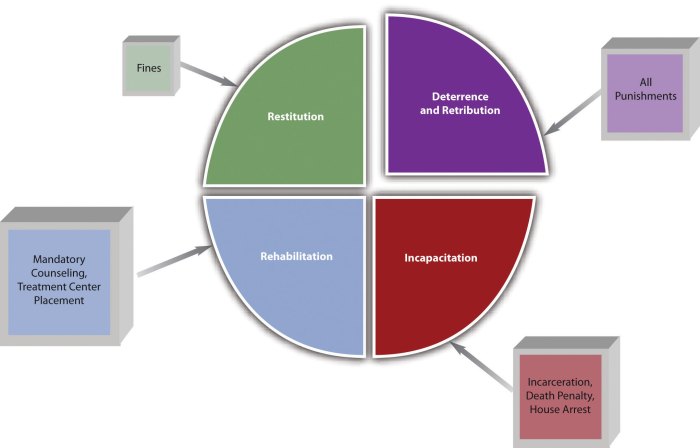Crimes are generally defined and their punishments specified by law, establishing clear boundaries for acceptable behavior and consequences for transgressions. This legal framework serves multiple purposes, including protecting society, deterring crime, and ensuring fairness in the justice system.
Various jurisdictions adopt distinct approaches to defining crimes, reflecting cultural and societal norms. Understanding these definitions is crucial for individuals to navigate the legal landscape and avoid criminal liability.
1. Crimes and Punishments Defined by Law

Crimes are generally defined and their punishments specified by the criminal codes of different jurisdictions. The purpose of defining crimes in law is to provide a clear understanding of what conduct is considered criminal and to establish the appropriate consequences for such conduct.
By doing so, the law serves to protect society, maintain order, and provide justice for victims of crime.
For example, in the United States, the federal criminal code defines murder as “the unlawful killing of a human being with malice aforethought.” The punishment for murder can range from life imprisonment to the death penalty, depending on the circumstances of the crime.
2. Classification of Crimes
Crimes are typically classified into various categories based on their severity. Common categories include:
| Crime Category | Definition | Examples |
|---|---|---|
| Felonies | Serious crimes punishable by more than one year in prison | Murder, robbery, rape |
| Misdemeanors | Less serious crimes punishable by up to one year in prison | Theft, disorderly conduct, trespassing |
| Inchoate Offenses | Attempts or conspiracies to commit crimes | Attempted murder, conspiracy to commit robbery |
The classification of crimes is influenced by factors such as the harm caused to society, the intent of the offender, and the likelihood of recidivism.
3. Punishments for Crimes

The punishments for crimes vary depending on the severity of the offense. Common types of punishments include:
- Imprisonment
- Fines
- Probation
- Community service
- Restitution
The severity of punishment is influenced by factors such as the nature of the crime, the offender’s criminal history, and the impact of the crime on the victim and society.
For example, in the United States, the punishment for murder can range from life imprisonment to the death penalty, depending on the circumstances of the crime.
4. Sentencing Guidelines

Sentencing guidelines are established by courts or legislatures to provide guidance to judges when imposing sentences for crimes. These guidelines typically consider factors such as the severity of the offense, the offender’s criminal history, and the impact of the crime on the victim and society.
Sentencing guidelines can have both advantages and disadvantages. On the one hand, they can help to ensure that sentences are fair and consistent. On the other hand, they can limit the discretion of judges and may not always take into account individual circumstances.
For example, the United States Sentencing Commission has developed sentencing guidelines for federal crimes. These guidelines provide a range of sentences for each offense, based on the offender’s criminal history and the severity of the crime.
5. Discretion in Sentencing

Judges have some discretion when sentencing offenders. This discretion allows judges to consider individual circumstances and tailor sentences to the specific needs of the offender and the case.
Factors that judges may consider when exercising discretion include the offender’s age, mental health, and family circumstances. Judges may also consider the offender’s potential for rehabilitation and the impact of the sentence on the offender’s family and community.
For example, a judge may sentence a first-time offender with no prior criminal history to probation instead of imprisonment.
6. Sentencing Disparities
Sentencing disparities occur when offenders who commit similar crimes receive different sentences. These disparities can be caused by a variety of factors, including the race, gender, and socioeconomic status of the offender.
Sentencing disparities can have a negative impact on individuals and society. They can lead to distrust in the criminal justice system and undermine the goal of rehabilitation.
Strategies to reduce sentencing disparities include:
- Providing training to judges on implicit bias
- Developing sentencing guidelines that are more objective and less discretionary
- Collecting data on sentencing outcomes to identify and address disparities
FAQ Explained: Crimes Are Generally Defined And Their Punishments Specified By
What is the purpose of defining crimes in law?
Defining crimes in law establishes clear expectations for behavior, protects society, deters crime, and ensures fairness in the justice system.
How do different jurisdictions approach defining crimes?
Jurisdictions may adopt varying approaches to defining crimes, influenced by cultural and societal norms.
What factors influence the severity of punishment for crimes?
Factors such as the nature of the offense, intent, prior criminal history, and mitigating circumstances can impact the severity of punishment.